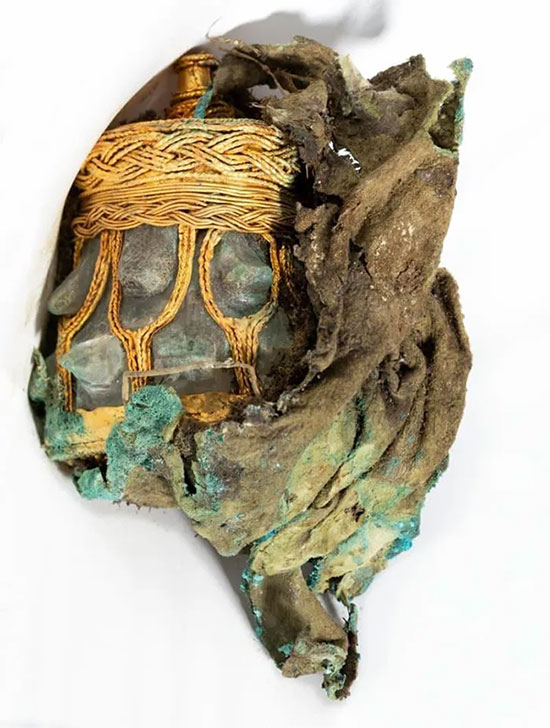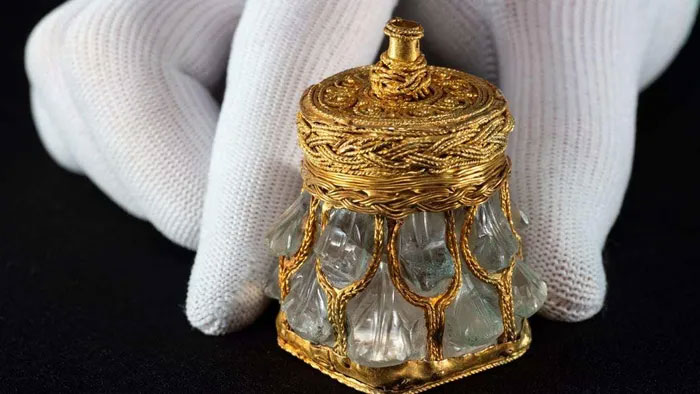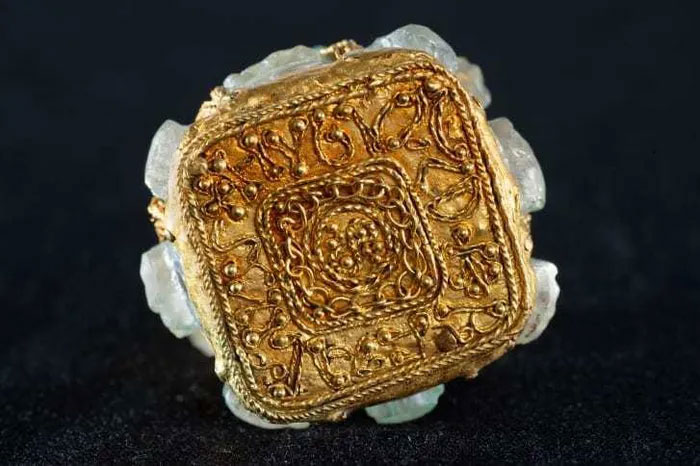The Final Mystery of the Gold-Covered Crystal Vase Has Been Revealed, Providing Clues About Its True Origin.
Researchers at the National Museum of Scotland have stated that the crystal vase was found among the treasures on a Viking ship discovered in southwestern Scotland in 2014.

The vase is part of the Galloway Hoard collection.
Experts believe that this is a diplomatic gift from the Roman Empire to an Anglo-Saxon kingdom in England.
The exquisite vase is part of the Galloway Hoard, the richest collection of rare and unique Viking artifacts ever found in England or Ireland. The Galloway Hoard includes over 100 artifacts, including jewelry and silver ingots, discovered in September 2014.
For the first time, when the vase was taken out of storage, it was covered in fabric, and the research team had to conduct 3D X-ray imaging to obtain clear images before proceeding with the preservation process and removing the coverings.

The gold-covered crystal vase was used for royal perfumes or oils.

The vase is part of the Viking treasure.
Standing about 5 cm tall, the vase once contained perfume or another valuable liquid used for kings or in religious ceremonies. The vase was carefully wrapped in a leather pouch lined with silk, indicating its significant importance. Underneath, there is an inscription that reads “Bishop Hygauld do me made“.
Researchers believe this is a sign that the crystal vase was produced in the powerful Anglo-Saxon kingdom of Northumbria, located in what is now northern England and southern Scotland.
Martin Goldberg, the senior curator of the medieval and early Viking collection at the museum, stated: “This vase has elements of gold work unlike anything we have seen in Anglo-Saxon artifacts.“
Although the Galloway Hoard dates back to around 900 AD, this object is much older. Initially, the vase was used to hold perfume or a liquid of “great value,” before it was later gilded.
It is known that only two powers had the capability to use crystal in this manner: the Roman Empire and the Fatimid Caliphate of North Africa.
Discovering the exact origins of this ancient object has greatly impressed Martin Goldberg, who referred to it as a “highlight of my career.”
Most of the items in the Galloway Hoard collection are currently on display at the Kirkcudbright Art Gallery, while the remainder has been transferred to Edinburgh for display at the National Museum of Scotland.


















































